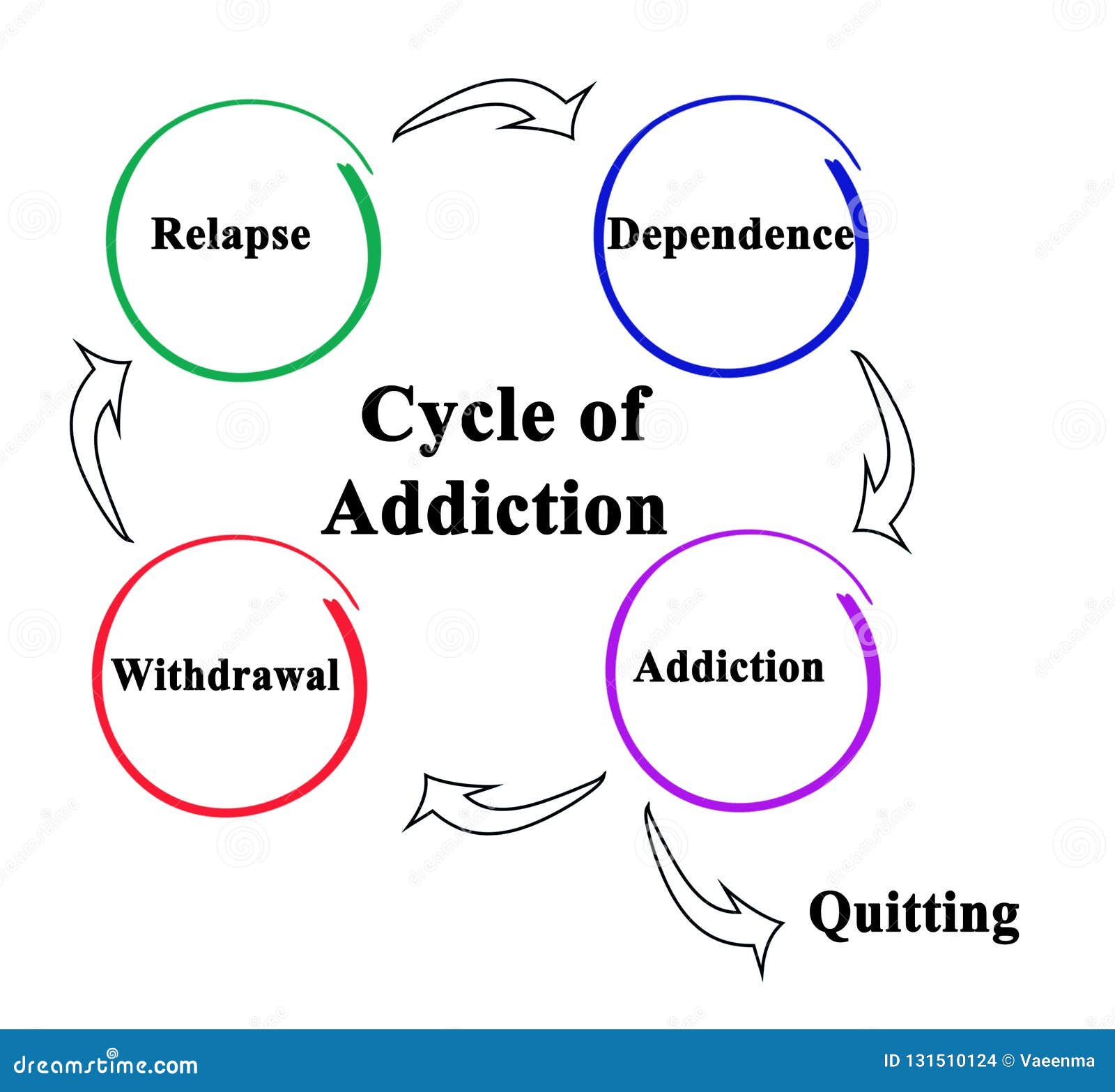The cycle of addiction is a complex and often insidious phenomenon that affects millions of individuals worldwide. Understanding this cycle is vital not only for those who suffer from substance use disorders but also for their families, friends, and the broader community. By exploring the nuances of this cycle, we can foster a more profound understanding and compassion for those ensnared within it. This article delves into the intricacies of the cycle of addiction and presents a downloadable PDF that individuals can utilize for reflection, education, and support. Let’s embark on this enlightening journey together.
At its core, the cycle of addiction comprises several interlinked stages, creating an ongoing loop that can be challenging to escape. The primary phases include initiation, experimentation, regular use, risky use, dependence, and ultimately, relapse. Each stage serves as both a milestone and a potential trap, ensnaring the individual deeper into the labyrinth of their addiction.
The initial stage is often marked by curiosity and the allure of new experiences. Individuals may begin experimenting with substances like alcohol, nicotine, or drugs, driven by a desire for novelty or social acceptance. This experimentation phase may seem innocuous at first—often characterized by social use or minimal engagement. However, it is crucial to recognize that this stage lays the groundwork for what may become an all-consuming habit.
As individuals transition from experimentation to regular use, the frequency and intensity of consumption may increase. This phase is often characterized by a sense of control; users believe they can manage their intake. Unfortunately, this is where the deceitful nature of addiction begins to manifest. Tolerance builds, leading to the need for higher doses to achieve the same euphoric effects. The sense of control is gradually replaced by an ever-growing dependency on the substance, as the brain begins to rewire itself to prioritize drug-seeking behavior.
Risky use marks a turning point in the cycle. Here, individuals may engage in reckless behavior, risking not only their health but also their relationships, career, and personal safety. This stage is often fueled by denial; many individuals might still cling to the belief that they can stop using whenever they choose. The irony of addiction is evident here—the more they attempt to exert control, the tighter the grip of the substance becomes.
Dependence differs from mere use in that it signifies a physical and psychological reliance on the substance. Individuals may experience withdrawal symptoms when not using, leading them to return to the cycle despite the adverse consequences. This entrenchment in addiction can catalyze a vicious cycle, further isolating the individual from their support networks and exacerbating any underlying psychological issues, such as anxiety or depression.
The concept of relapse is often misunderstood. It is not merely a failure but rather an integral part of the recovery process for many. Relapse can occur at any stage of the cycle, and recognizing this possibility can be crucial for a successful recovery journey. The downloadable PDF detailing the cycle of addiction provides insight into common triggers for relapse, including stress, social pressures, emotional upheavals, and even complacency during recovery. Having this knowledge can empower individuals to develop proactive strategies to mitigate potential relapses.
A significant aspect of understanding the cycle of addiction is recognizing that it is not a solitary endeavor. Families and friends often find themselves drawn into this cycle, helplessly watching their loved ones struggle. This realization underscores the importance of community support and open conversations about addiction. Sharing the downloadable PDF with family and friends can facilitate discussions, foster empathy, and build a collaborative support system focused on recovery.
In addition to outlining the cycle itself, the PDF printable delves into various types of addiction—substance-related and behavioral. While the public may often associate addiction with drugs or alcohol, it’s crucial to consider behavioral addictions such as gambling, gaming, and even compulsive internet use. Specifically addressing these addictions within the context of the cycle can broaden the understanding of how any compulsive behavior can lead to a similar spiraling effect, ultimately impacting mental health and quality of life.
Moreover, the printable resource goes a step further by offering practical tips for both individuals struggling with addiction and their support systems. The sections on coping mechanisms, healthy lifestyle choices, and professional help can guide those navigating the tumultuous waters of addiction or supporting someone who is. Often, basic strategies—such as mindfulness practices, exercise, and support groups—can be transformative in breaking the cycle.
Understanding the cycle of addiction is not merely an academic exercise; it has tangible implications for treatment and recovery. By recognizing the patterns at play, individuals can better advocate for themselves and access the resources they need. Moreover, the PDF allows readers to engage with the materials at their own pace, providing the opportunity for reflection and discussion without the pressure of real-time interactions.
In conclusion, the cycle of addiction is a multifaceted process that encompasses various stages, challenges, and resources for recovery. The downloadable PDF serves as a practical tool to enhance understanding and foster discussions. By taking the time to download, reflect, and engage with this material, readers can take meaningful steps toward breaking the cycle, whether for themselves or their loved ones. True recovery is an arduous journey, but with knowledge and support, individuals can emerge from the shadows of addiction into the light of healing and hope.
